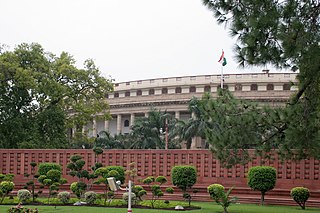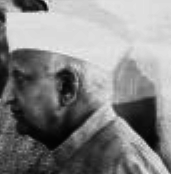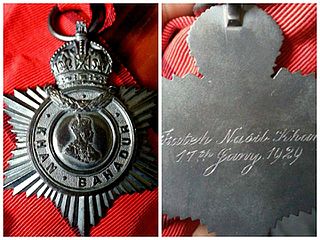This article is missing information about members elected for each party by province.(December 2017) |
| |||||||||||||
104 seats contested | |||||||||||||
|---|---|---|---|---|---|---|---|---|---|---|---|---|---|
| |||||||||||||
 |
|---|
| This article is part of a series on the politics and government of India |
———————
Legislatures: ——————— Urban bodies: |
General elections were held in British India in 1920 to elect members to the Imperial Legislative Council and the Provincial Councils. They were the first elections in the country's history. [1]

The British Raj was the rule by the British Crown in the Indian subcontinent from 1858 to 1947. The rule is also called Crown rule in India, or direct rule in India. The region under British control was commonly called British India or simply India in contemporaneous usage, and included areas directly administered by the United Kingdom, which were collectively called British India, and those ruled by indigenous rulers, but under British tutelage or paramountcy, and called the princely states. The whole was also informally called the Indian Empire. As India, it was a founding member of the League of Nations, a participating nation in the Summer Olympics in 1900, 1920, 1928, 1932, and 1936, and a founding member of the United Nations in San Francisco in 1945.

The Imperial Legislative Council was a legislature for British India from 1861 to 1947. It succeeded the Council of the Governor-General of India, and was succeeded by the Constituent Assembly of India and after 1950, was succeeded by Parliament of India.
Contents
- Results
- Central Legislative Assembly
- Members of Central Legislative Assembly
- Officials
- Nominated Non-Officials
- Elected Non-Officials
- Members of the Council of State
- See also
- References
The new Central Legislative Assembly which was the lower chamber of the Imperial Legislative Council was based in Delhi had 104 elected seats, of which 66 were contested and eight were reserved for Europeans elected through the Chambers of Commerce. [1] For the upper chamber, the Council of State, 24 of the 34 seats were contested, whilst five were reserved for Muslims, three for Whites, one for Sikhs and one for the United Provinces. [1] The Parliament was opened by the Duke of Connaught and Strathearn on 9 February 1921. [2]

The Central Legislative Assembly was the lower house of the Imperial Legislative Council, the legislature of British India. It was created by the Government of India Act 1919, implementing the Montagu–Chelmsford Reforms. It was also sometimes called the Indian Legislative Assembly and the Imperial Legislative Assembly. The Council of States was the upper house of the legislature for India.

Delhi, officially the National Capital Territory of Delhi (NCT), is a city and a union territory of India containing New Delhi, the capital of India. It is bordered by Haryana on three sides and by Uttar Pradesh to the east. The NCT covers an area of 1,484 square kilometres (573 sq mi). According to the 2011 census, Delhi's city proper population was over 11 million, the second-highest in India after Mumbai, while the whole NCT's population was about 16.8 million. Delhi's urban area is now considered to extend beyond the NCT boundaries and include the neighboring satellite cities of Faridabad, Gurgaon, Ghaziabad and Noida in an area now called Central National Capital Region (CNCR) and had an estimated 2016 population of over 26 million people, making it the world's second-largest urban area according to United Nations. As of 2016, recent estimates of the metro economy of its urban area have ranked Delhi either the most or second-most productive metro area of India. Delhi is the second-wealthiest city in India after Mumbai, with a total private wealth of $450 billion and is home to 18 billionaires and 23,000 millionaires.
The Council of State was the upper house of the legislature for British India created by the Government of India Act 1919 from the old Imperial Legislative Council, implementing the Montagu–Chelmsford Reforms. The Central Legislative Assembly was the lower house.
Alongside the national elections there were also elections to 637 seats in Provincial Assemblies. Of these, 440 were contested, 188 had a single candidate elected unopposed. Despite the calls by Mahatma Gandhi for a boycott of the elections, only six had no candidate. [1] Within the Provincial Assemblies 38 were reserved for White voters. [1]

Mohandas Karamchand Gandhi was an Indian activist who was the leader of the Indian independence movement against British colonial rule. Employing nonviolent civil disobedience, Gandhi led India to independence and inspired movements for civil rights and freedom across the world. The honorific Mahātmā was applied to him first in 1914 in South Africa – is now used worldwide. In India, he was also called Bapu, a term that he preferred and Gandhi ji, and is known as the Father of the Nation.






